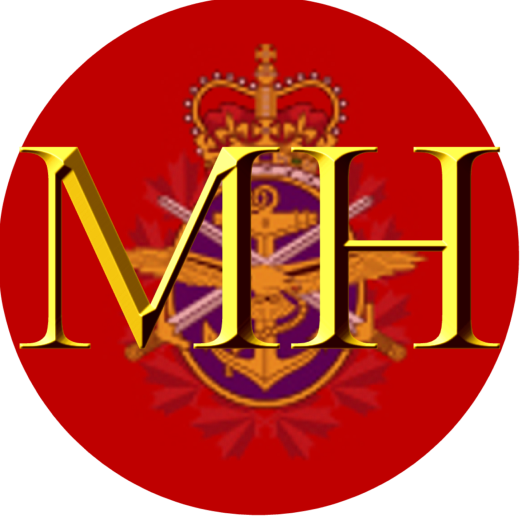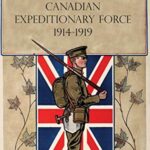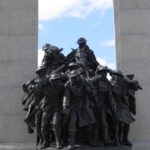Canada’s Role as a Military Peacekeeper with the United Nations: A Comprehensive Study
When we look back at the history of Canadian peacekeeping, we see not just a series of military missions but a profound commitment to the ideals of diplomacy and multilateralism. Canada’s role in the development of United Nations peacekeeping is rooted in a broader vision of how nations could work together to maintain peace in a world fraught with political instability and war. This vision, championed by Lester B. Pearson during the Suez Crisis in 1956, set Canada on a path to becoming one of the world’s foremost peacekeeping nations. In the decades that followed, Canadian soldiers, diplomats, and peacekeepers would serve in conflict zones across the globe, earning Canada a reputation for neutrality, professionalism, and a deep commitment to international law.
But peacekeeping, as Canada understood it, was never just about military force. It was about impartiality, about putting down arms in favor of dialogue, and about offering the world a vision of conflict resolution that went beyond war. This essay explores Pearson’s revolutionary idea, the organization of UN peacekeeping forces, Canada’s commitment to peacekeeping, a survey of the missions Canada has participated in, and an analysis of Canada’s enduring legacy as a global peacekeeping leader.
The Vision of Lester B. Pearson and the Birth of UN Peacekeeping
The story begins in the crucible of post-World War II politics, a time when the world, still reeling from the devastation of the war, found itself caught in the grip of the Cold War. The establishment of the United Nations (UN) in 1945 brought with it hopes of a new era of international cooperation. Yet, in the years that followed, tensions between the Western powers and the Soviet Union grew increasingly dangerous, threatening to derail any prospect of lasting peace. Against this backdrop, the Suez Crisis of 1956 exploded onto the world stage.
The Suez Canal, a vital waterway linking the Mediterranean to the Red Sea, had long been of strategic importance. When Egyptian President Gamal Abdel Nasser nationalized the canal in 1956, it triggered a storm of international outrage. Britain and France, both with deep colonial interests in the region, launched a military intervention, joined by Israel, which had its own security concerns. The move was met with swift condemnation from the Soviet Union and heightened the possibility of a broader conflict, even a superpower confrontation. The United States, under President Dwight D. Eisenhower, also opposed the intervention, but no clear path forward had emerged to resolve the escalating crisis.
Enter Lester B. Pearson, then Canada’s Secretary of State for External Affairs. Pearson, a skilled diplomat with a deep understanding of international affairs, saw an opportunity to avert disaster. He proposed a radical new solution: the creation of an international peacekeeping force under the auspices of the UN, composed of troops from neutral countries, which would oversee the withdrawal of British, French, and Israeli forces from Egypt. It was a bold idea. Pearson’s vision wasn’t about choosing sides in a conflict—it was about creating a neutral, multinational force that would serve the higher purpose of peace, enforcing ceasefires, and ensuring stability without being party to the underlying disputes.
In late 1956, Pearson’s plan was approved by the United Nations General Assembly, and the first-ever United Nations Emergency Force (UNEF) was deployed to the Sinai Peninsula. This marked the birth of modern peacekeeping and cemented Pearson’s legacy as one of the architects of post-war diplomacy. For his efforts, Pearson was awarded the Nobel Peace Prize in 1957, and his vision became a cornerstone of Canada’s foreign policy, setting the stage for Canada’s active involvement in peacekeeping missions around the world.
The Organization of UN Peacekeeping Forces
Pearson’s idea for a neutral UN peacekeeping force required more than just the deployment of soldiers. It was about building a system through which the international community could intervene in conflicts without becoming entangled in them. Peacekeeping, in this sense, became a means of conflict prevention, providing breathing room for diplomacy and ensuring that conflicts did not spiral out of control.
At the heart of the peacekeeping model was the principle of impartiality. Peacekeepers would be drawn from nations not directly involved in the conflict, making them neutral arbiters. The forces themselves would have limited mandates, focused on monitoring ceasefires, separating warring factions, protecting civilians, and facilitating the delivery of humanitarian aid. Crucially, peacekeepers would only be deployed with the consent of the parties involved in the conflict, ensuring that their presence was not seen as an invasion or occupation but as a stabilizing force.
The organization of UN peacekeeping forces was international in scope. Each mission was composed of troops contributed voluntarily by UN member nations, with participating countries sending personnel, equipment, and logistical support. Canada was quick to become one of the largest contributors to these forces. The country’s military, shaped by its experiences in both World Wars and by a strong tradition of professionalism, was well-suited to this new type of engagement. Canadian soldiers, accustomed to working in diverse and multinational coalitions, were often seen as ideal peacekeepers—neutral, disciplined, and skilled in both combat and diplomacy.
Canada’s Commitment to Peacekeeping
Canada’s commitment to UN peacekeeping was more than just a military endeavor; it was a reflection of the nation’s values and its foreign policy vision. In the decades following Pearson’s initiative, Canada became a leading player in peacekeeping, contributing soldiers, diplomats, and logistical support to missions around the world. From the frozen plains of Cyprus to the mountains of the Balkans, from the war-torn streets of Kigali to the deserts of the Sinai, Canadian peacekeepers were there, serving under the blue helmets of the UN.
At the heart of Canada’s commitment to peacekeeping was the belief in multilateralism—the idea that global challenges required global solutions, and that no nation, however powerful, could maintain peace on its own. Canada’s role as a peacekeeper reflected this philosophy. Canadian governments, regardless of political stripe, consistently supported peacekeeping as a means of contributing to global stability and security. Peacekeeping allowed Canada to punch above its weight in international affairs, giving the country a leadership role in global diplomacy while avoiding the entanglements of imperial ambition that had plagued other powers.
Over time, Canadian soldiers became known for their ability to navigate complex, often volatile situations. They were trained not only to engage in combat but also to mediate between warring factions, protect civilians, and work closely with humanitarian organizations. Canada’s role as a peacekeeping nation came to symbolize its broader commitment to diplomacy, human rights, and international law.
Canada’s Peacekeeping Missions: A Survey of Key Operations
Canada’s involvement in UN peacekeeping missions has spanned decades and taken its soldiers to some of the most challenging conflict zones in the world. What follows is a survey of the key missions that have defined Canada’s peacekeeping legacy:
- United Nations Emergency Force (UNEF I) – Egypt (1956-1967)
This was the very first UN peacekeeping mission, established to monitor the ceasefire between Egypt and the invading British, French, and Israeli forces during the Suez Crisis. Canadian soldiers played a central role in UNEF I, helping to ensure the peaceful withdrawal of foreign troops from Egypt and stabilizing the region. - United Nations Operation in the Congo (ONUC) – Congo (1960-1964)
Following the Congo’s independence from Belgium in 1960, the country descended into chaos and civil war. Canada contributed troops to the UN’s peacekeeping mission, which aimed to restore order, prevent external intervention, and support the new Congolese government during its transition to independence. - United Nations Peacekeeping Force in Cyprus (UNFICYP) – Cyprus (1964-present)
The conflict between Greek Cypriots and Turkish Cypriots erupted into violence in the early 1960s, threatening to escalate into a larger regional conflict. Canadian peacekeepers have been deployed in Cyprus since 1964, maintaining a buffer zone between the two communities and helping to prevent further violence. This remains one of the longest-standing peacekeeping missions in UN history. - United Nations Emergency Force II (UNEF II) – Egypt/Israel (1973-1979)
After the Yom Kippur War of 1973, UNEF II was established to oversee the disengagement of Egyptian and Israeli forces and monitor the ceasefire along the Suez Canal. Canada played a significant role in this mission, with Canadian soldiers helping to prevent a resurgence of hostilities between the two nations. - United Nations Protection Force (UNPROFOR) – Former Yugoslavia (1992-1995)
During the brutal Bosnian War, Canadian peacekeepers were part of UNPROFOR, which sought to protect civilians, deliver humanitarian aid, and monitor ceasefires in the midst of ethnic conflict. The mission highlighted the complexity of modern peacekeeping, as Canadian troops often found themselves in situations where the lines between peacekeeping and active combat were blurred. - United Nations Assistance Mission for Rwanda (UNAMIR) – Rwanda (1993-1996)
In one of the darkest chapters in UN history, Canadian troops, under the command of General Roméo Dallaire, were part of the peacekeeping mission in Rwanda during the 1994 genocide. Despite their best efforts, the peacekeepers were unable to prevent the mass slaughter of nearly one million Tutsis and moderate Hutus. The mission became a symbol of the limits of peacekeeping when confronted with large-scale atrocities, but Canadian soldiers worked to save as many lives as possible under impossible conditions. - United Nations Mission in Haiti (MINUSTAH) – Haiti (2004-2017)
Following a period of political instability and violence in Haiti, Canadian peacekeepers were deployed to help maintain security and assist in the rebuilding of the country’s political and social institutions. Canada’s contribution to this mission included both military and police personnel, reflecting its broader commitment to supporting democracy and stability in the Americas. - United Nations Interim Force in Lebanon (UNIFIL) – Lebanon (1978-present)
Established to oversee the withdrawal of Israeli forces from Lebanon and to maintain peace along the Lebanese-Israeli border, UNIFIL became a long-term peacekeeping mission in the volatile Middle East. Canadian peacekeepers have played a role in ensuring that hostilities do not flare up again in this conflict-prone region. - United Nations Transition Assistance Group (UNTAG) – Namibia (1989-1990)
Canada contributed to this mission, which oversaw the peaceful transition of Namibia from South African rule to independence. Canadian troops helped monitor the ceasefire, demobilize forces, and ensure a free and fair election in Namibia’s first steps as an independent nation. - United Nations Mission in the Central African Republic (MINUSCA) – Central African Republic (2014-present)
Canada has participated in efforts to stabilize the Central African Republic, where ongoing conflict and instability have required the presence of UN peacekeepers to protect civilians and support the fragile political process. - United Nations Multidimensional Integrated Stabilization Mission in Mali (MINUSMA) – Mali (2013-present)
Canada’s involvement in MINUSMA reflects its commitment to addressing instability in the Sahel region. Canadian forces have provided air support, logistics, and peacekeepers to assist in counter-insurgency efforts and the protection of civilians in Mali’s ongoing conflict.
Canada’s Peacekeeping Legacy: An Enduring Commitment to Global Stability
Canada’s legacy as a peacekeeping nation is deeply woven into its identity on the world stage. From Lester Pearson’s groundbreaking initiative in 1956 to the countless missions that have followed, Canada has consistently stood for the ideals of peace, diplomacy, and multilateralism. While peacekeeping has often been fraught with challenges—ranging from the logistical complexities of operating in conflict zones to the moral dilemmas faced by soldiers on the ground—Canada’s commitment has remained steadfast.
Peacekeeping is not without its limitations, and there have been moments when the international community, including Canada, has been unable to prevent atrocities, as in the case of Rwanda. But despite these tragic moments, Canada’s contributions to UN peacekeeping have made a tangible difference in stabilizing regions, protecting civilians, and fostering long-term conflict resolution. Canadian peacekeepers have been called upon not only to serve as soldiers but as diplomats, mediators, and humanitarian workers, reflecting the broad and nuanced role that peacekeeping has come to represent.
As global conflicts evolve, so too does the nature of peacekeeping. Canada’s role, shaped by its historical experiences and diplomatic ethos, will continue to be essential as the world grapples with new challenges. Whether in the deserts of Mali or the mountains of the Balkans, Canadian peacekeepers have proven that the pursuit of peace is not just an ideal but a practical and necessary endeavor in an increasingly interconnected world.
Canada’s enduring role in UN peacekeeping stands as a testament to the power of international cooperation, the importance of conflict prevention, and the belief that nations, working together, can make the world a more just and peaceful place.



